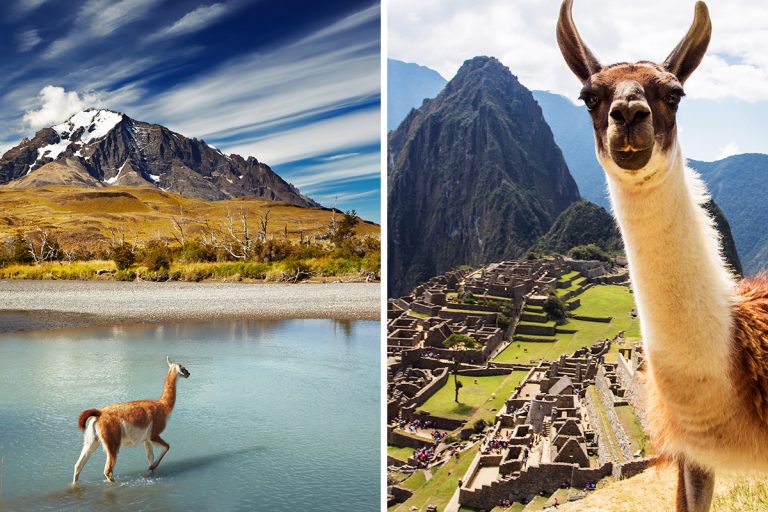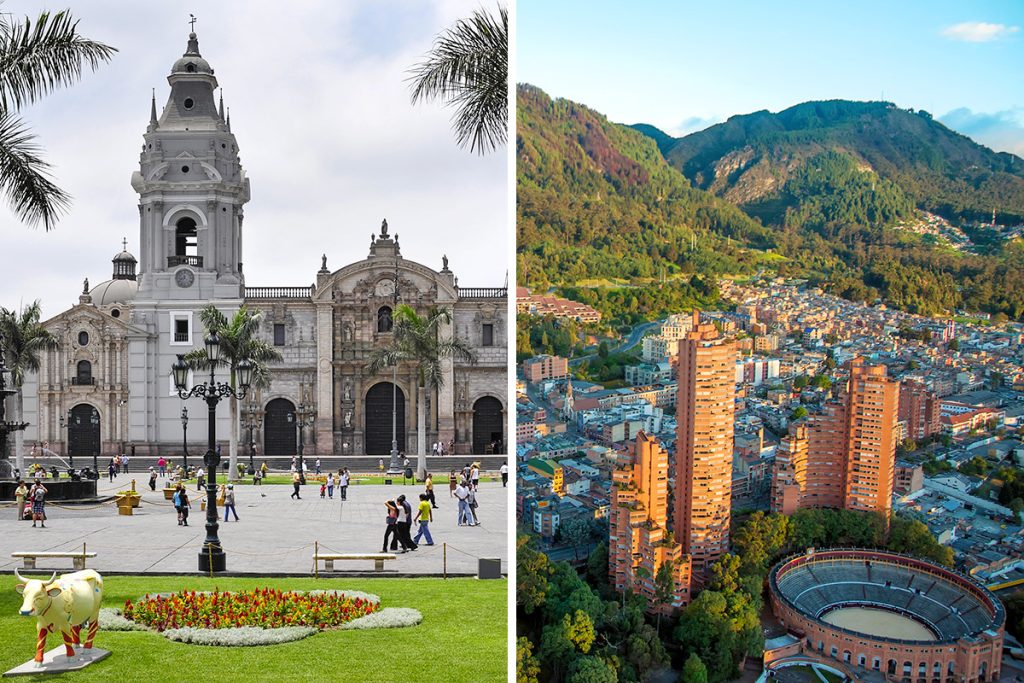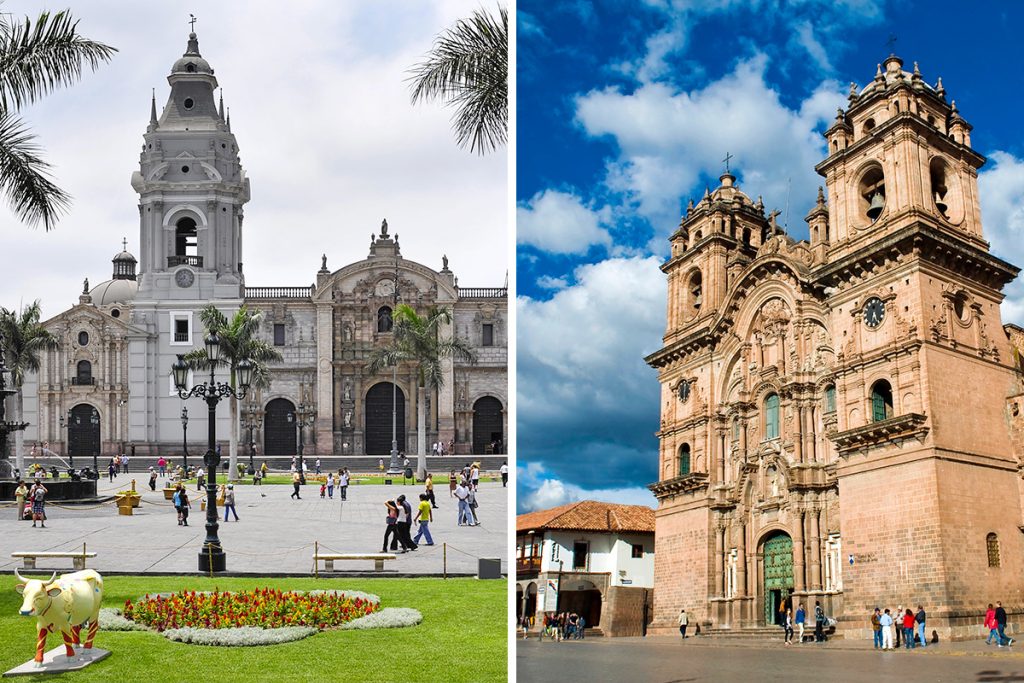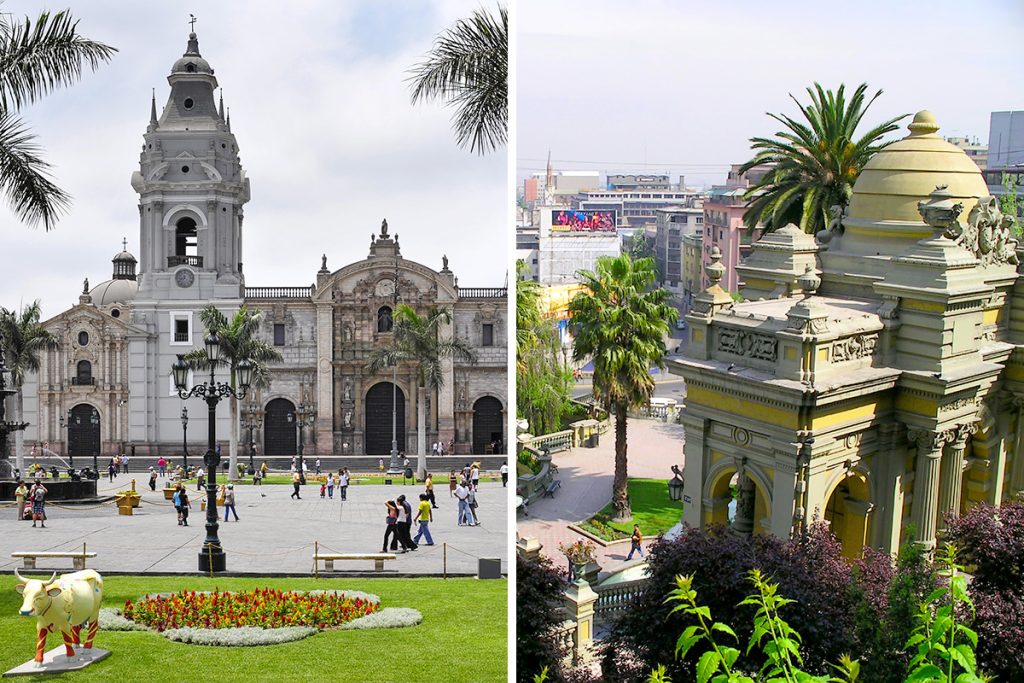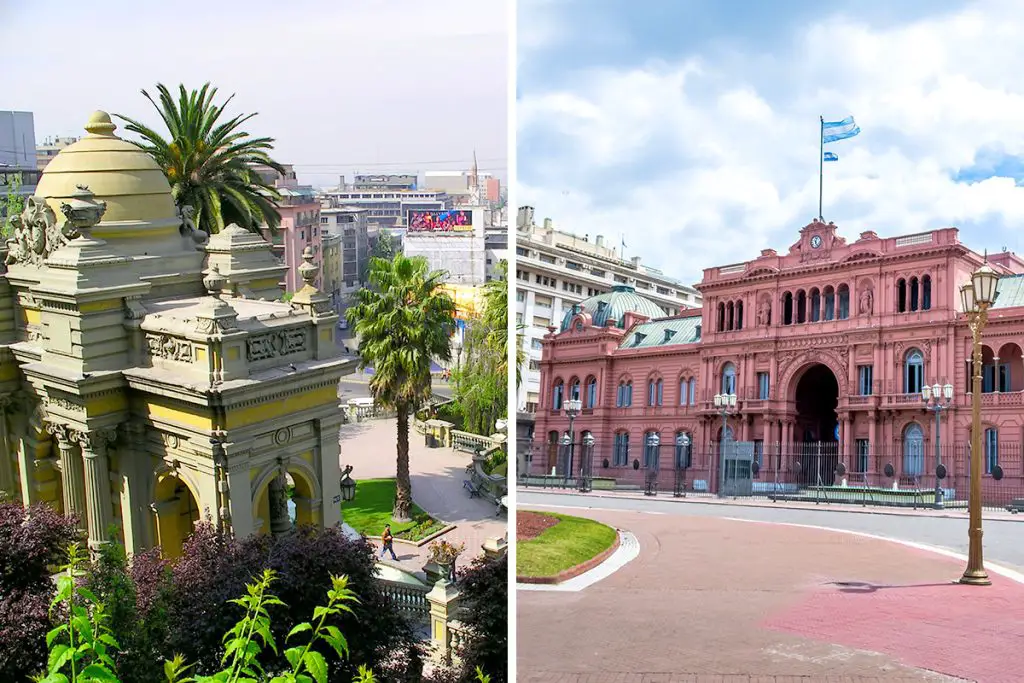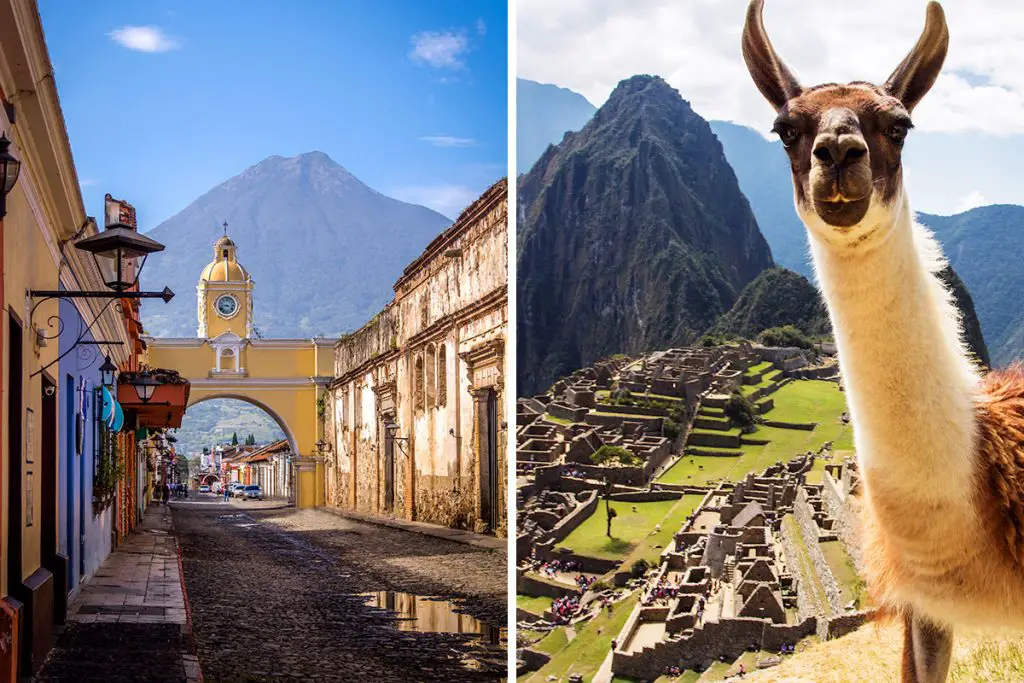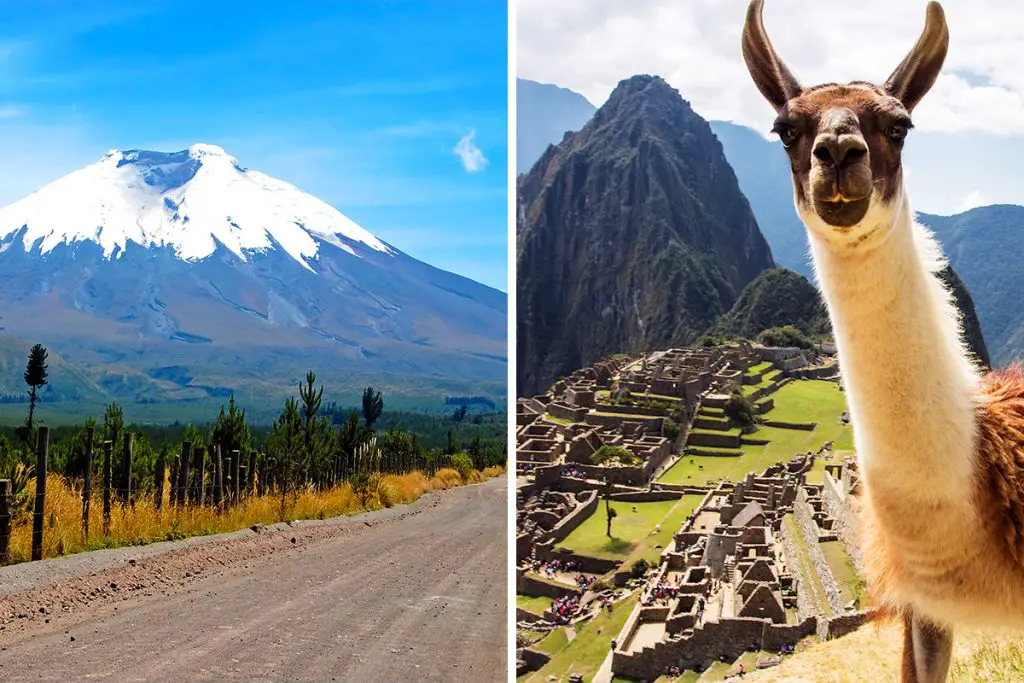Both Chile and Peru offer unforgettable experiences for visitors. Each country boasts unique attractions and activities that cater to different interests. Ready to uncover which destination is the perfect match for your next adventure? Keep reading and let us guide you through the comparison of these two remarkable South American countries.
History & Culture
Diving into the history and culture of Chile and Peru can be a fascinating experience. Both countries showcase a rich past and vibrant traditions that will leave you in awe. Let’s compare their historical and cultural offerings to help you decide which destination best fits your interests.
In Chile, the diverse history spans from ancient indigenous cultures to the arrival of the Spanish conquistadors. Chile’s culture is a unique blend of indigenous roots and European influences, mainly from Spain. Traditional arts, such as handicrafts and folk music, are still an integral part of Chilean life.
On the other hand, Peru’s history is deeply rooted in the Inca civilization, which left behind impressive archaeological sites like Machu Picchu. Peru’s culture is a melting pot of indigenous, Spanish, and African influences, resulting in a rich tapestry of customs, traditions, and artistic expressions.
Chilean history is marked by the struggle for independence from Spanish rule, leading to a strong sense of national identity. The country’s cultural scene has flourished over the years, with the growth of literature, visual arts, and performing arts.
Peru also has a strong artistic heritage, with a wide range of artistic disciplines, including pottery, textiles, and architecture. The country’s ancient civilizations have left a lasting impact on Peruvian culture, which is evident in its archaeological sites, museums, and traditional celebrations.
In summary, Chile’s history and culture reflect its indigenous and European influences, while Peru’s cultural landscape is shaped by its ancient civilizations and diverse ethnic groups. Each country offers a unique perspective on South America’s rich heritage, allowing you to immerse yourself in their captivating stories and traditions.
Attractions & Activities
Exploring the attractions and activities in Chile and Peru can provide unforgettable experiences for any traveler. Let’s compare what each destination has to offer in terms of sights and adventures.
Chile’s landscape is incredibly diverse, ranging from the arid Atacama Desert to the lush forests and snow-capped peaks of Patagonia. Outdoor enthusiasts will relish the chance to hike, bike, or go horseback riding through these breathtaking regions.
Peru, with its varied geography, also offers exciting outdoor activities. The Andes mountain range and the Amazon rainforest provide excellent opportunities for hiking, birdwatching, and wildlife spotting.
Chile’s capital, Santiago, is home to an array of museums, galleries, and historic sites. For a unique experience, you can visit the mysterious Easter Island, with its enigmatic stone statues called moai.
In Peru, the city of Cusco serves as the gateway to the famous Machu Picchu, a must-visit destination for any traveler. Additionally, the vibrant capital of Lima offers a mix of history and modernity, with its colonial architecture and contemporary museums.
Chile’s Torres del Paine National Park is a haven for nature lovers, with its striking granite peaks and diverse wildlife. Hiking the park’s well-known trails, such as the W Trek or the O Circuit, is a bucket-list experience.
In Peru, a trip to the floating islands of Lake Titicaca offers a glimpse into the unique way of life of the Uros people, who live on these man-made islands built from reeds.
In conclusion, both Chile and Peru boast a wide array of attractions and activities for travelers to enjoy. Whether you’re seeking outdoor adventures, historical sights, or unique cultural experiences, each country offers something special to make your trip unforgettable.
Beaches
When it comes to beaches, both Chile and Peru have their unique offerings for sun-seekers and water sports enthusiasts. Let’s take a look at the coastal gems each country boasts.
Chile’s extensive coastline, stretching 4,270 kilometers (2,653 miles), offers a diverse range of beaches. Viña del Mar, a popular resort city, is home to beautiful sandy beaches like Reñaca and Playa Ancha, perfect for relaxing and sunbathing.
In Peru, the coastline extends 2,414 kilometers (1,500 miles) and features a variety of beach landscapes. Punta Sal, near the border with Ecuador, is famous for its white sand and clear, warm waters, making it an ideal spot for swimming and snorkeling.
Chile’s northern coast is a paradise for surfers. Beaches like Iquique and Arica offer world-class waves, attracting surfers from all over the globe.
Peru also has its share of excellent surfing spots. Beaches like Máncora and Punta Rocas provide consistent waves and have hosted international surfing competitions.
For a more secluded experience, Chile’s Chiloé Island offers remote beaches surrounded by lush forests, such as Cole-Cole Beach and Cucao Beach. These hidden gems are perfect for nature lovers looking for tranquility.
In Peru, the Paracas National Reserve has pristine beaches like La Mina and El Raspón, which are not only beautiful but also rich in biodiversity, providing opportunities for wildlife watching.
In summary, both Chile and Peru have stunning beaches that cater to different preferences. Whether you’re a surfer, a sunbather, or a nature enthusiast, you’ll find the perfect beach destination in either country.
Eating, Drinking & Nightlife
Savoring the flavors and experiencing the nightlife in Chile and Peru can be a highlight of your trip. Let’s compare the culinary scenes and entertainment options in these two countries.
Chilean cuisine is a fusion of indigenous and European flavors. You’ll enjoy trying dishes like empanadas, pastel de choclo, and cazuela. Fresh seafood is abundant along the coast, with specialties like ceviche and machas a la parmesana.
Peruvian cuisine has gained global recognition, known for its diversity and unique ingredients. Signature dishes include lomo saltado, anticuchos, and aji de gallina. Like Chile, Peru is famous for its ceviche, which comes in various regional styles.
When it comes to drinking, Chile is renowned for its wine production. Visiting a vineyard or tasting a glass of Carmenere or Sauvignon Blanc is a must while in the country.
Pisco, a grape brandy, is Peru’s national spirit, and trying a refreshing Pisco Sour is a must during your visit. The country also has a growing craft beer scene for those who prefer hops to grapes.
In Chile, the nightlife scene is vibrant, with Santiago offering a variety of clubs, bars, and live music venues. Valparaíso, with its bohemian vibe, also has a lively nightlife, with many bars and clubs in its historic quarter.
Peru’s capital, Lima, is the epicenter of the country’s nightlife, with a wide range of options, from trendy bars to pulsating nightclubs. Miraflores and Barranco are popular districts for evening entertainment.
To sum up, both Chile and Peru offer enticing culinary experiences and lively nightlife scenes. From mouthwatering local dishes to bustling bars and clubs, you’ll find plenty to enjoy during your stay in either country.
Shopping
Shopping in Chile and Peru can be a delightful experience, with each country offering unique souvenirs, handicrafts, and local products. Let’s compare the shopping opportunities in these two South American nations.
In Chile, you’ll find a variety of traditional crafts, such as lapis lazuli jewelry, Mapuche textiles, and alpaca wool products. Santiago, the capital city, is a shopper’s paradise with numerous malls, boutiques, and markets to explore.
Peru is famous for its exquisite handicrafts, including alpaca and vicuña wool clothing, silver jewelry, and colorful textiles. Lima, the capital, has a thriving shopping scene with malls, markets, and artisanal shops.
Chilean handicraft markets, like Los Dominicos in Santiago and Feria Artesanal de Valparaíso, are great places to discover unique, handcrafted items and souvenirs to take home.
In Peru, markets such as Pisac in the Sacred Valley and the Indian Market in Miraflores, Lima, offer a wide range of artisanal products, from Andean textiles to hand-painted ceramics.
For luxury shopping, Chile’s Parque Arauco and Costanera Center in Santiago boast high-end international brands and designer boutiques to satisfy your fashion cravings.
Peru’s Jockey Plaza in Lima is a popular destination for upscale shopping, featuring a mix of high-end international brands and top Peruvian designers.
In conclusion, both Chile and Peru offer diverse shopping experiences, from traditional markets selling local handicrafts to modern malls with international brands. No matter your preferences, you’ll find plenty of treasures to bring home from either country.
Accommodation
When it comes to accommodation, Chile and Peru have a wide range of options to suit every traveler’s needs and budget. Let’s compare the lodging choices available in these two countries.
Chile has a diverse selection of accommodations, from luxury hotels and boutique lodgings to budget hostels and eco-lodges. Santiago, Valparaíso, and Viña del Mar are popular destinations with numerous lodging options.
In Peru, you’ll also find a variety of accommodations, from high-end hotels and charming bed-and-breakfasts to budget-friendly hostels and family-run guesthouses. Lima, Cusco, and Arequipa have plenty of choices to suit every taste.
Chile’s eco-lodges, like those found in the Torres del Paine National Park, offer unique experiences with a focus on sustainability and preserving the natural environment.
In Peru, you can opt for a traditional homestay experience, especially in the Sacred Valley, allowing you to immerse yourself in local culture and customs.
Both Chile and Peru have an increasing number of boutique hotels, combining personalized service and stylish design in prime locations.
To sum up, whether you’re seeking luxury, eco-conscious lodgings, or budget-friendly options, both Chile and Peru offer an array of accommodations to make your stay comfortable and memorable.
Family-Friendliness & Children’s Activities
Choosing a family-friendly destination with engaging activities for children is important when planning a vacation. Let’s compare Chile and Peru in terms of family-friendliness and children’s activities.
In Chile, families will find many attractions to enjoy together. The Fantasilandia amusement park in Santiago and the Buin Zoo are popular destinations for a day of family fun.
Peru also offers a variety of family-friendly activities. The Parque de las Leyendas Zoo in Lima and the ChocoMuseo in Cusco are both exciting options for children and parents alike.
Chile’s stunning landscapes, such as Torres del Paine National Park, provide opportunities for guided family hikes and wildlife watching, creating unforgettable memories.
In Peru, families can explore the ancient Inca ruins of Machu Picchu and the surrounding Sacred Valley, with guided tours tailored for children to keep them engaged and entertained.
Chilean ski resorts like Valle Nevado and Portillo are great for family vacations during the winter months, offering ski lessons and activities for children of all ages.
Peru’s Huacachina oasis, with its thrilling dune buggy rides and sandboarding, is an exciting destination for families seeking adventure.
In summary, both Chile and Peru offer a wealth of family-friendly attractions and activities, ensuring a memorable vacation for families with children of all ages.
Getting There & Getting Around
Ease of travel is a crucial factor when choosing a vacation destination. In this section, we’ll compare the accessibility of Chile and Peru and the ease of getting around in both countries.
Chile is well-connected with major international airports like Santiago International Airport (SCL), located about 15 miles (24 kilometers) from the city center. Direct flights from the USA, Europe, and other South American countries are available.
Peru also has good international connectivity, with Lima’s Jorge Chávez International Airport (LIM) offering direct flights from the USA, Europe, and other South American destinations. The airport is situated around 7 miles (11 kilometers) from the city center.
Once in Chile, you’ll find public transportation options like buses and the Santiago Metro, which are affordable and efficient. Taxis and ride-hailing services are also available in major cities.
In Peru, public transportation includes buses and Lima’s Metropolitano rapid transit system. Taxis and ride-hailing services are easily accessible in cities like Lima and Cusco.
For exploring the vast landscapes of Chile, renting a car is a popular choice, giving you the freedom to discover the country’s diverse regions at your own pace.
Similarly, in Peru, car rentals are available for those who wish to explore the country’s many attractions independently.
In conclusion, both Chile and Peru are easily accessible by air and offer various transportation options for getting around, ensuring a convenient and enjoyable travel experience.
Weather
Weather plays a significant role in deciding the ideal vacation destination. Here’s a comparison of the weather in Chile and Peru to help you make an informed choice.
Chile has a diverse climate, with temperatures ranging from 30°F to 86°F (-1°C to 30°C) due to its extensive length. Northern Chile has a desert climate, while the south experiences colder, wetter conditions.
Peru’s climate varies as well, with temperatures fluctuating between 50°F and 81°F (10°C to 27°C). Coastal areas have a subtropical climate, while the Andean highlands experience colder temperatures.
In Chile, the best time to visit is during the summer months of December to February, when temperatures are warm and rainfall is minimal, particularly in central and southern regions.
For Peru, the ideal time to travel is between May and October, which is the dry season in the Andean highlands and the Amazon region, offering comfortable temperatures and lower rainfall.
Both Chile and Peru have ski seasons during their winter months (June to August), attracting snow enthusiasts to their respective ski resorts, like Valle Nevado in Chile and Huaraz in Peru.
To summarize, Chile and Peru both have diverse climates, but the best time to visit depends on your preferred activities and the region you plan to explore.
Safety
Safety is a top priority when choosing a vacation destination. Let’s compare the safety levels in Chile and Peru.
Chile is considered one of the safest countries in South America, with relatively low crime rates. However, petty crime, such as pickpocketing, can occur in crowded areas, so it’s important to be vigilant.
Peru, on the other hand, has a higher crime rate, particularly in larger cities like Lima. Pickpocketing and bag-snatching are common in crowded places. Being cautious and aware of your surroundings can help you avoid these incidents.
In both Chile and Peru, it’s recommended to avoid walking alone at night, especially in unfamiliar areas, and to keep your belongings secure.
Natural hazards are also a concern in both countries. Earthquakes and volcanic eruptions can occur in Chile, while Peru is susceptible to earthquakes and flooding during the rainy season.
For health precautions, it’s advised to be up-to-date with vaccinations before traveling to either country. Malaria and yellow fever are risks in some parts of Peru, so it’s essential to take necessary precautions.
In conclusion, while both Chile and Peru have safety concerns, being cautious and well-informed can help ensure a safe and enjoyable vacation in either destination.
Cost
Comparing costs is essential when planning a vacation. Let’s explore the differences in costs between Chile and Peru.
In Chile, you’ll find that meals can range from 5,000 to 15,000 CLP ($7 to $21) at local restaurants. Accommodation varies, with budget options costing around 20,000 CLP ($28) per night and luxury hotels starting at 150,000 CLP ($210).
Peru offers more affordable options for dining, with meals costing between 10 to 35 PEN ($3 to $10). Accommodation in Peru also tends to be less expensive, with budget rooms starting at 30 PEN ($9) and upscale hotels from 200 PEN ($60).
When it comes to attractions, both countries offer a mix of free and paid experiences. In Chile, expect to pay around 40,000 CLP ($56) for popular tours. In Peru, visiting famous sites like Machu Picchu will cost around 152 PEN ($45).
Transportation costs are relatively similar in both countries. In Chile, a local bus ride costs around 700 CLP ($1), while in Peru, it’s about 2 PEN ($0.60). Long-distance buses and domestic flights are comparable in price.
Overall, traveling in Peru is generally more affordable than in Chile, with lower costs for meals, accommodations, and attractions. However, transportation costs are similar in both destinations.
Which Is Better – Chile or Peru?
Deciding between Chile and Peru depends on your preferences and interests. Let’s summarize the key points from the previous sections.
For history and culture enthusiasts, Peru offers a rich past with famous Inca sites, while Chile provides a unique blend of indigenous and European influences.
When it comes to attractions and activities, both countries boast diverse landscapes and experiences, from the Atacama Desert in Chile to the Amazon Rainforest in Peru.
Beach lovers will find stunning coastlines in both destinations, with Chile offering colder waters and Peru providing warmer, more tropical beaches.
Foodies and nightlife seekers will appreciate the vibrant dining scenes and lively night entertainment in both countries, with Peru being more affordable overall.
For shopping, both countries offer traditional markets and modern malls, with a wide variety of local and international products.
In terms of family-friendliness and children’s activities, both destinations cater to families with a range of attractions and experiences suitable for all ages.
Getting there and getting around in both countries is relatively easy, with well-connected transportation networks and a variety of options to choose from.
Weatherwise, both countries have diverse climates, but the best time to visit depends on your preferred activities and regions.
Safety is a concern in any destination, but by being cautious and well-informed, you can ensure a safe and enjoyable vacation in either Chile or Peru.
Cost-wise, Peru is generally more affordable than Chile, making it a more budget-friendly option.
In conclusion, choosing between Chile and Peru ultimately depends on your personal preferences, budget, and interests. Both countries offer unique experiences and unforgettable adventures, ensuring a memorable vacation, no matter which destination you choose.

